Drug Driving and Market Research: Internet Surveys and Campaigns
VerifiedAdded on 2023/06/07
|5
|676
|93
Report
AI Summary
This report delves into the critical issue of drug driving, primarily analyzing data obtained from internet surveys and evaluating the effectiveness of market research strategies, particularly awareness campaigns. The study identifies limitations of internet surveys, such as respondent bias due to confidentiality concerns, and contrasts them with the potential of personal interviews to gather more authentic information. Key findings from the survey reveal the prevalence of different substances in drug-driving incidents, with analgesics topping the list, followed by alcohol and cannabis. The report also explores effective strategies, such as the advertising campaign in South Australia, which categorizes drug drivers and tailors relevant ads to each group. Ultimately, the report underscores the value of market research in raising awareness and reducing dangerous behaviors like drug driving, suggesting that the strategies employed can be adapted to address similar issues globally. Desklib offers a wealth of resources, including past papers and solved assignments, to aid students in their studies.
1 out of 5
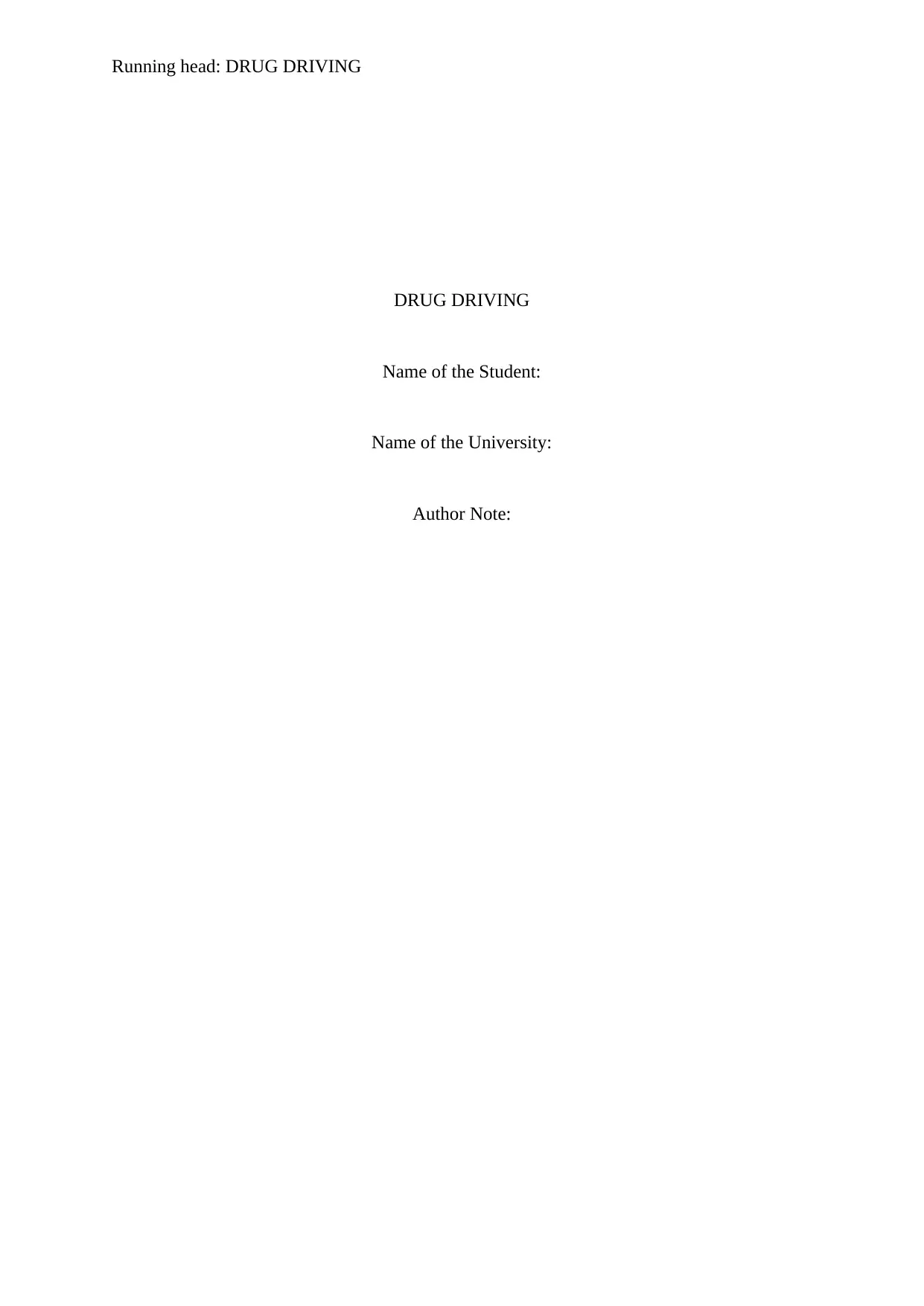
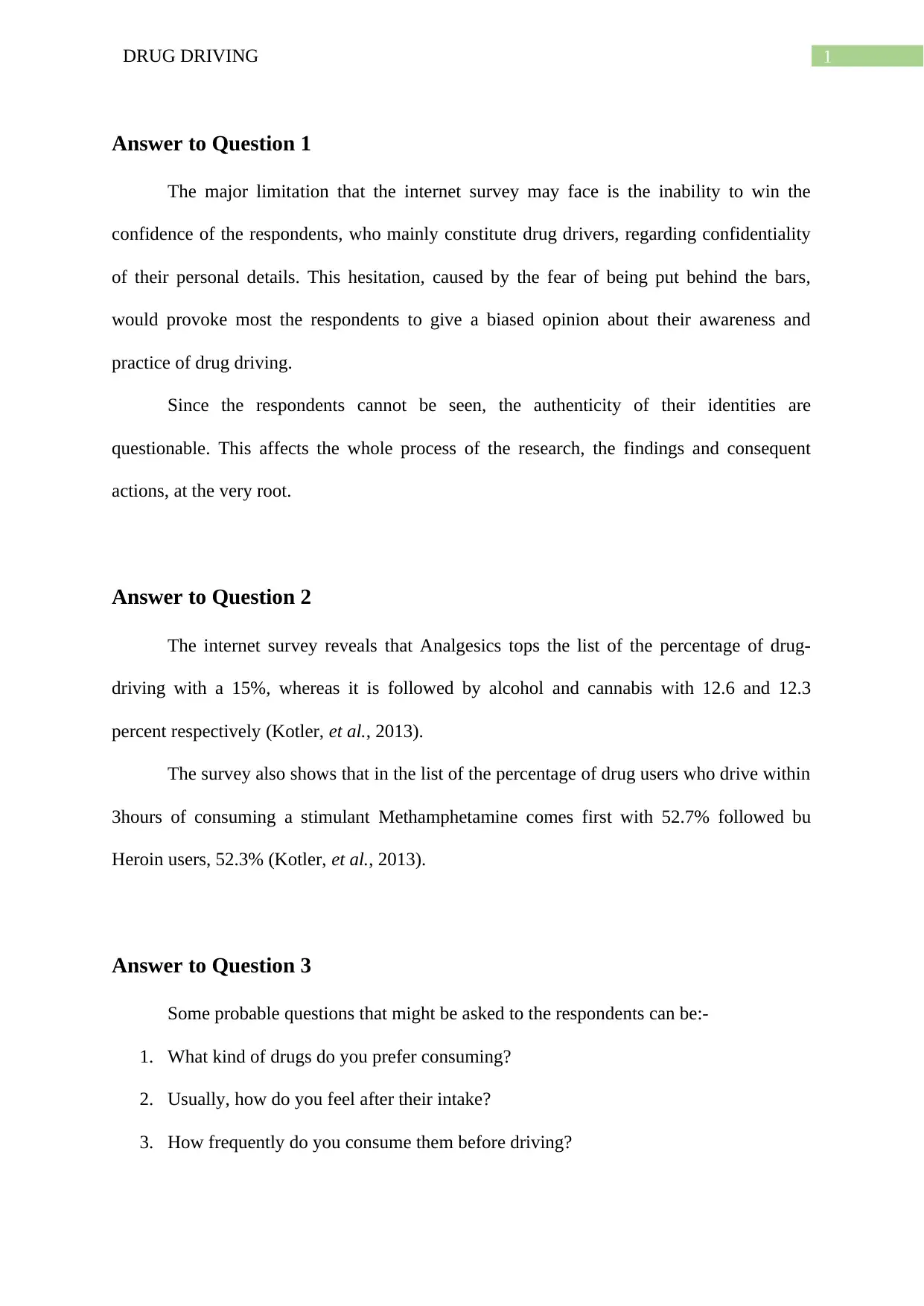
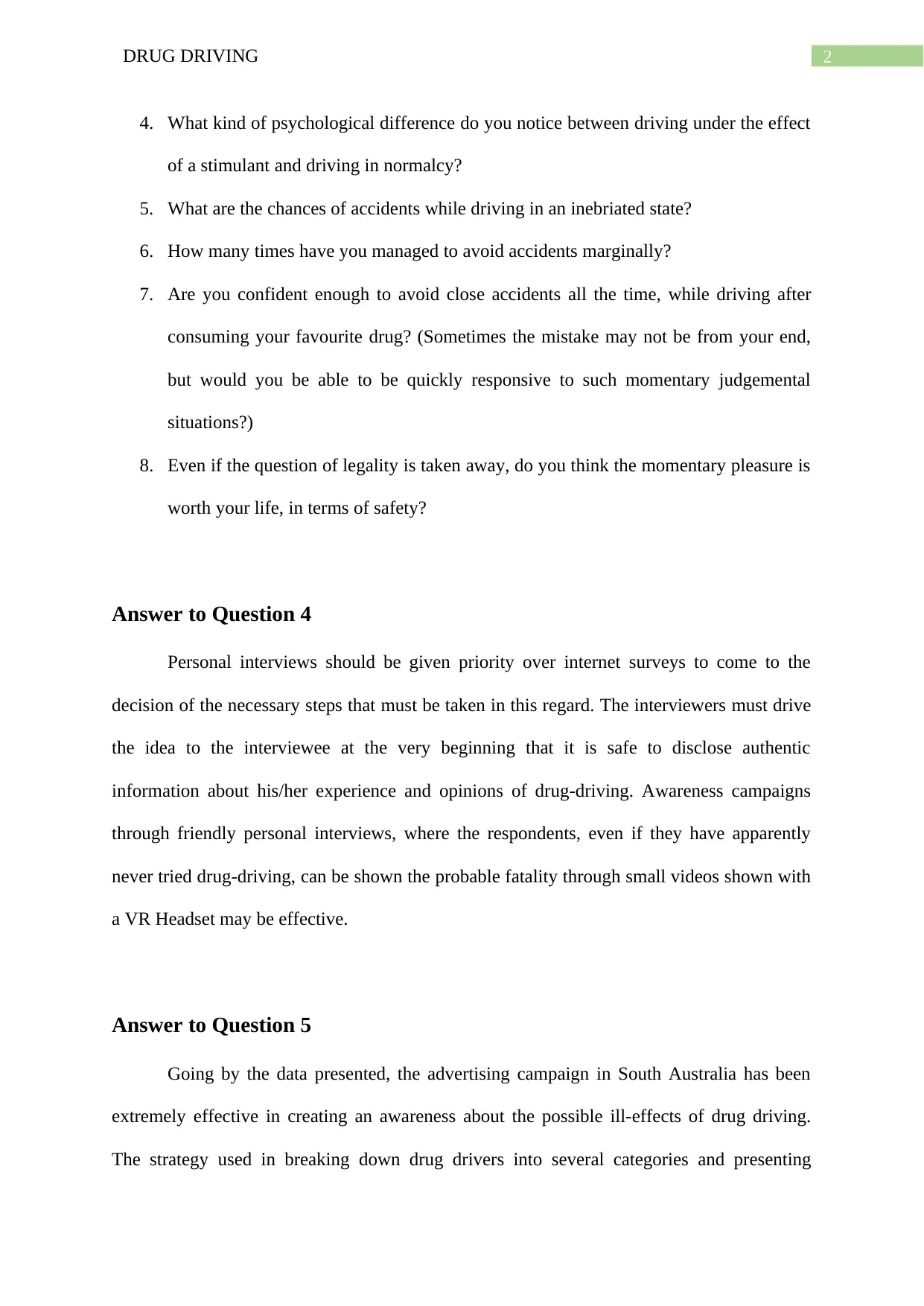

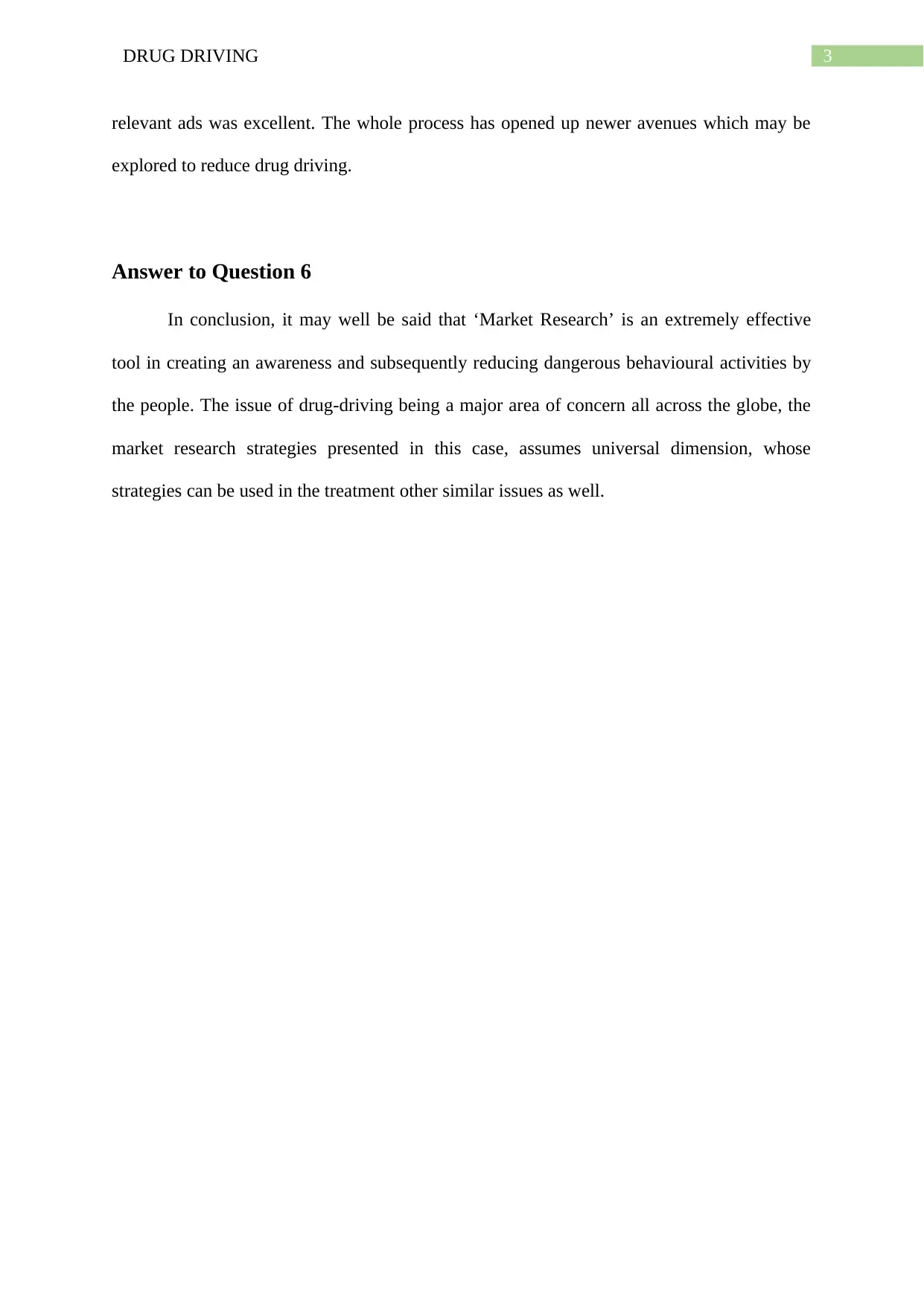
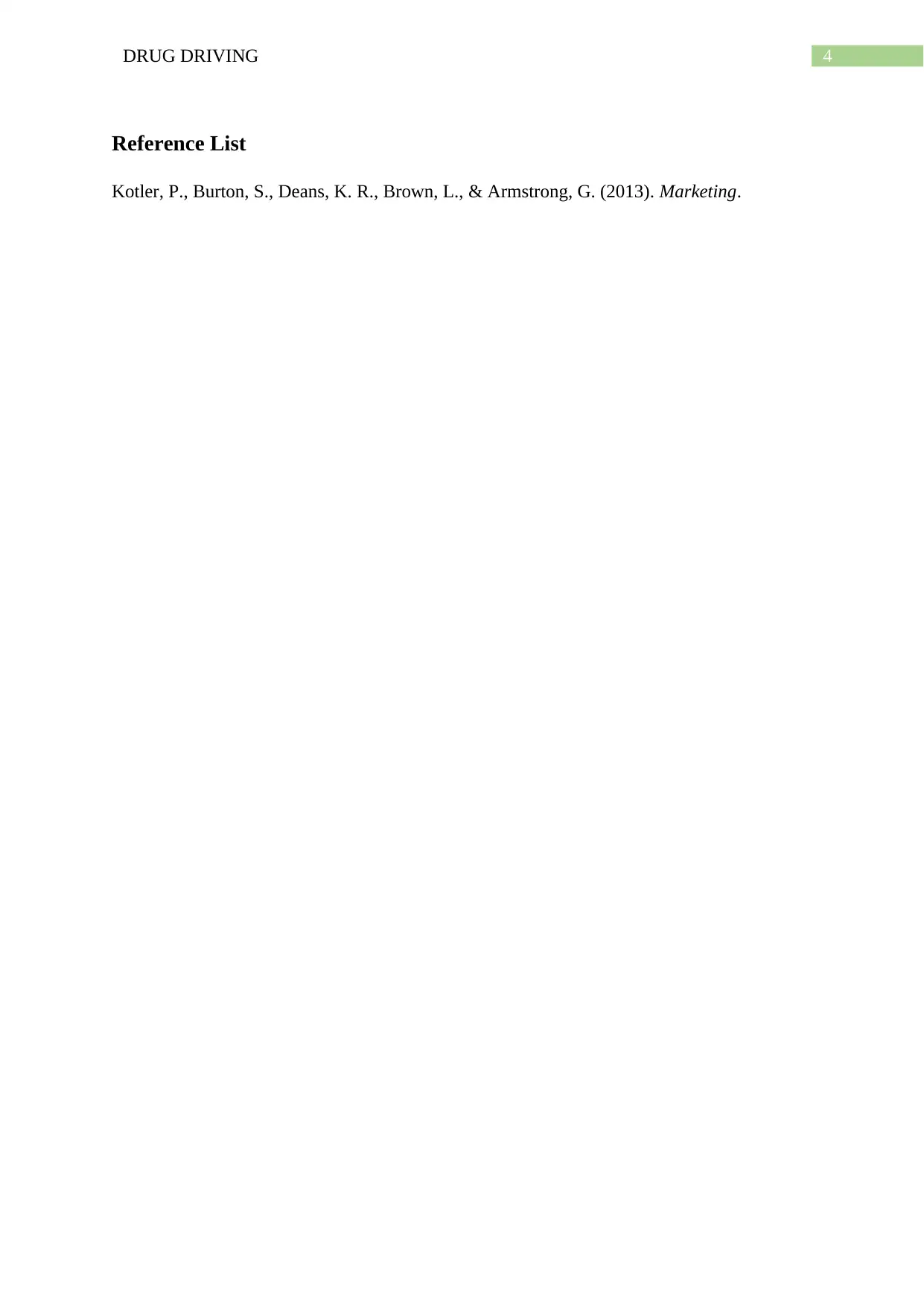
![[object Object]](/_next/static/media/star-bottom.7253800d.svg)